The Library of Consciousness
of Consciousness
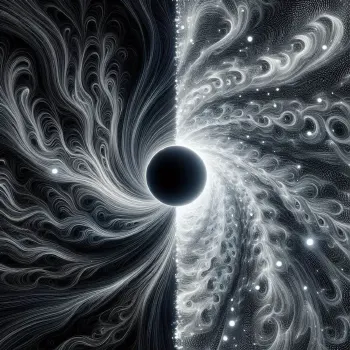
An important function of almost every system is to ensure its own perpetuation.
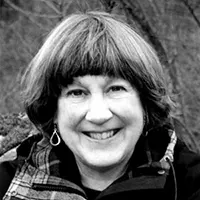
2008

Entropy and syntropy are two complementary yet contrasting principles that govern the flow and organization of energy and matter within the universe. While entropy represents the tendency towards disorder and disorganization, syntropy embodies the opposing force that drives order, complexity, and the emergence of structured systems. Some definitions describe entropic phenomena as determined by causes in the past, whereas syntropic phenomena are attracted towards future states.
The concept of entropy, derived from the second law of thermodynamics, describes the inevitable increase in disorder or randomness within an isolated system over time. This natural progression towards greater entropy is observed in various phenomena, such as the dissipation of heat, the degradation of materials, and the loss of information. Conversely, syntropy—a term coined by the Italian mathematician Luigi Fantappiè, related to Erwin Schrödinger’s concept of negentropy and A. N. Whitehead’s novelty—refers to the counteracting principle that facilitates the concentration of energy, the formation of intricate structures, and the evolution of organized systems. This force is evident in the self-organizing patterns observed in nature, the growth and development of living organisms, and the emergence of complexity from seemingly chaotic conditions, often arising from the interplay between entropy and the flow of energy or information within the system.

A Clarification
Reflections on Two Converse Forms of Spirit
Teilhard de Chardin identifies two distinct spiritual paths: unity through “relaxation” (Eastern pantheism) where individual egos dissolve into a common foundation, and unity through “tension” (Western mysticism) where individuals become more themselves while converging toward a universal center. He argues that cosmic evolution favors the latter path, where true union differentiates rather than fuses, and calls for a new Western mysticism that combines personalizing love with cosmic totalization.

A Major Problem for Anthropology
Teilhard envisions humanity not as evolution’s finale, but as its awakening. As our minds and societies knit into a single global consciousness—the noösphere—evolution becomes self-aware, guiding itself through thought and collaboration. In this new phase, life chooses its own becoming and reaches out toward the ultra-human.

A Mathematical Theory of Communication
Called the “Magna Carta of the Information Age” and a “blueprint for the digital era,” this groundbreaking paper gave rise to the field of information theory and revolutionized how we understand and transmit data. By introducing the “bit” as the fundamental unit of data, Claude Shannon explained how to efficiently encode messages to reduce errors and maximize transfer speed. His innovative concepts influenced everything from the internet and telecommunications to data compression and computer science, forever changing the way we connect and share information.

A Mental Threshold Across Our Path
From Cosmos to Cosmogenesis
Teilhard unveils a universe not static but alive—cosmogenesis, a great unfolding where matter rises toward spirit, complexity begets consciousness, and humanity discovers itself as evolution aware of itself. In this vision, evil is byproduct, individuality deepens in unity, and God becomes the animating center: love driving the cosmos toward its destined convergence.

Build Your Own Damn Wagon
(Laws and Freedom, Habits and Novelty)
"Do not watch, do not consume," implores Terence McKenna, inviting us on a thought-provoking journey to reclaim our humanness. By building our own conceptual wagons, rather than riding ready-made vehicles of meaning, we can travel along unique paths of critical thinking. Once within our own virtual worlds, the wonder of our distinctive minds will be open for discovery.

Can Biology, Taken to its Extreme Limit, Enable us to Emerge into the Transcendent?
Teilhard de Chardin argues that biological evolution relies on a “zest for life” or survival instinct. If humans perceive the universe as closed with no transcendent escape from total death, this zest would vanish, halting evolution. Thus, evolution can only continue if seen as irreversible and transcendent, ultimately leading to God.

Conscious Evolution
Our Next Stage
Barbara explored the ideas of Pierre Teilhard de Chardin, and the possibilty of humanity gradually giving birth to a new planetary-scale consciousness, which she called Homo universalis.

Countdown Into Complexity
Briefing for a Descent Into Novelty
At his weekend workshop Terence led attendees on an intellectual odyssey traversing psychedelics, virtual reality, technology, culture, spirituality, and the evolution of novelty over time. Blending philosophy, futurology, and mysticism, he explored humanity's relationship with nature and machines, challenging participants to think critically, create freely, and keep an open mind. The goal was to expand consciousness and uncover deeper truths about existence.
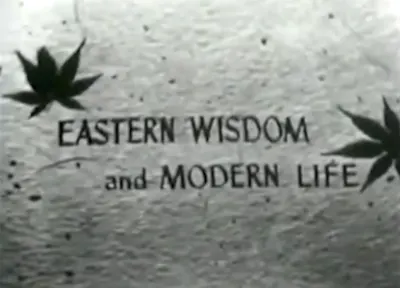
Nonsense
Eastern Wisdom and Modern Life (Episode 10)
Sense or meaning is a property ascribed to symbols rather than the real word. Alan Watts uses this differentiation as a prelude to the Taoist and Zen Buddhist idea of the perfectly "purposeless" life and its parallels in Christianity.
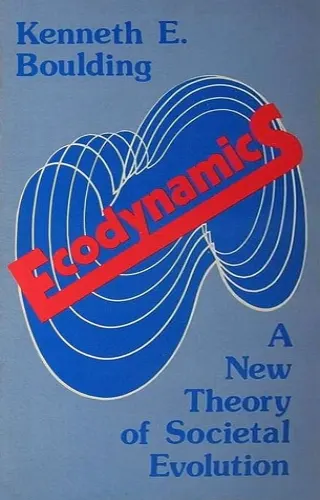
Ecodynamics
A New Theory of Societal Evolution
Embark on a captivating journey into Ecodynamics, a realm where the choreography of humanity and nature unfolds. This narrative intricately weaves economics, ecology, and human behavior, illuminated by Boulding's visionary concept of ecodynamics. His framework reveals the harmonious yet fragile bond between ecosystems and economies, a bond often ignored at our peril. Boulding's interdisciplinary exploration spans from population dynamics to resource usage and technology's role, dismantling the myth of infinite growth in a finite world. Ecodynamics challenges norms, offering profound insights that beckon us to adopt sustainable practices. This clarion call echoes—safeguard both civilization and the environment for lasting well-being.

Eros and the Eschaton
What Science Forgot: The Importance of Human Beings
Delivered in Kane Hall at the University of Washington, Terence points out the universe's peculiar tendency to seek out complexity and novelty, and that humanity seems to be the focal point of this process.
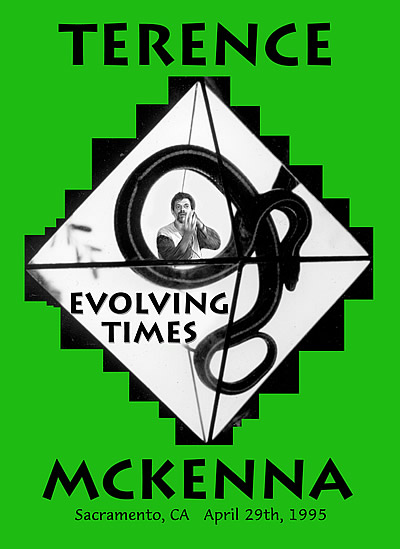
Evolving Times
This evening address is one of Terence’s funniest, in which much is said about monkeys, mushrooms, plants, and people. The question and answer session gets good and lively, with his unique analysis of UFOs, governments, and possible evolutionary pathways for us and the planet.
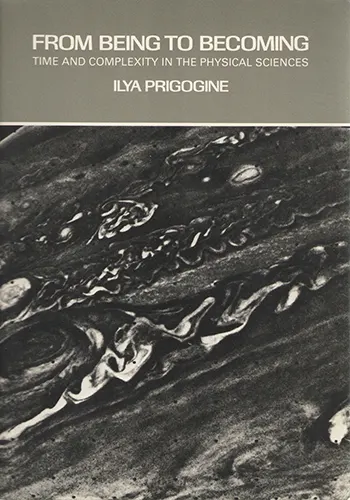
From Being to Becoming
Time and Complexity in the Physical Sciences
How has order emerged from chaos? In this book, intended for the general reader with some background in physical chemistry and thermodynamics, Ilya Prigogine shows how systems far from equilibrium evolve elaborate structures: patterns of circulation in the atmosphere, formation and propagation of chemical waves, the aggregation of single-celled animals. In an effort to understand these phenomena, he explores the philosophical implications of the work for which he received the 1977 Nobel Prize in Chemistry. From Being to Becoming explains how order can develop and offers a new approach to the asymmetry between past and future—the irreversibility of time. Prigogine presents an evolving rather than static world. This imaginative work is sure to arouse controversy and may change the way that the reader sees the laws of science and the world that those laws seek to explain.

Hot Concepts and Melting Edges
A weekend workshop held at Esalen, with the alternate titles of Deeper and Broader Questions and Eros, Chaos, and Meaning's Edge.

Imagination in the Light of Nature
Terence claims that “the boundless creativity of the human mind will be tapped into and come to our aid.” His bold statement is followed by an inspirational pep-talk about how miraculous the appearance of consciuosness in this universe is, and what a valuable potential humans represent in future cosmic evolution.

In the Valley of Novelty
Journeying through multiple dimensions of psychedelic consciousness, Terence McKenna's visionary weekend workshop invites us on an entheogenic voyage to the frontiers of the mind and its imminent conquering of matter. Blending scientific insights with shamanic wisdom, McKenna argues that natural plant medicines like psilocybin and DMT provide portals into mystical realms and alien dimensions, catalyzing revelations about nature, reality, and the human psyche. He urges us to courageously explore these consciousness-expanding substances, seeking the gratuitous beauty and truths they unveil. For McKenna, the psychedelic experience holds secrets to our world and ourselves—if only we dare lift the veil.
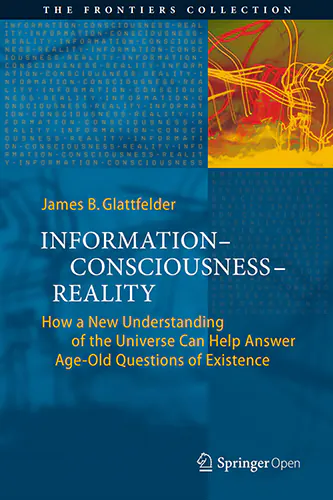
Information — Consciousness — Reality
How a New Understanding of the Universe Can Help Answer Age-Old Questions of Existence
This open access book chronicles the rise of a new scientific paradigm offering novel insights into the age-old enigmas of existence. Over 300 years ago, the human mind discovered the machine code of reality: mathematics. By utilizing abstract thought systems, humans began to decode the workings of the cosmos. From this understanding, the current scientific paradigm emerged, ultimately discovering the gift of technology. Today, however, our island of knowledge is surrounded by ever longer shores of ignorance. Science appears to have hit a dead end when confronted with the nature of reality and consciousness. In this fascinating and accessible volume, James Glattfelder explores a radical paradigm shift uncovering the ontology of reality. It is found to be information-theoretic and participatory, yielding a computational and programmable universe.

Interview with John Hazard
Terence McKenna describes Novelty Theory to director John Hazard with an elaboration of its core principles involving hyper-complexification and the compression of time. He holds forth on the correspondences between the structure of the DNA molecule and the Chinese I-Ching, then shows how his notion of an archaic revival leads from the theories of mind and the art movements of the early twentieth century to the shaman as the quintessential figure of the twenty-first century, with psychedelic substances being the bridge between these worldviews.

Man's Place in the Universe
Reflexions on Complexity
In this unusually personal essay, Teilhard speaks almost across the table, inviting us to rethink our cosmic standing. He shows how humanity, once dwarfed by vast space and tiny particles, regains significance through a third dimension of reality: complexity. As matter organizes itself into ever-deeper centers, consciousness rises—and in us, becomes self-aware. Humanity is not a cosmic accident, he suggests, but the universe awakening to itself and preparing its next leap.

Megatripolis Opening Night
Terence McKenna discusses the discovery of a new legal psychedelic compound from the salvia divinorum plant. He argues that humanity is on the brink of a cultural transformation driven by the accelerating production of novelty in the universe, enabled by psychedelics and technology. He envisions a transcendental future where boundaries dissolve and consciousness evolves.
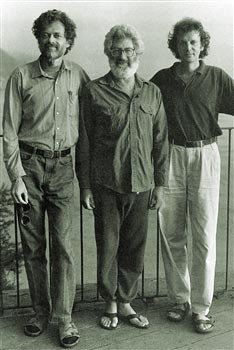
Metamorphosis
Join McKenna, Sheldrake, and Abraham on an imaginative journey into nature's creativity. Surfing the chaotic waters of psychedelic states, they catch glimpses of the Gaian mind behind Earth's being. Here, in imaginal realms beyond rationale, novelty is born. By relinquishing egoic control and surrendering to an unknowable creative force, we tap into the divine imagination—the eternal wellspring of nature's endless becomings. Immersing ourselves in this flow, we reunite with the cosmic creative essence.

Metaphysics of Psychedelics
Terence McKenna delves into the enigmatic realm of ayahuasca, unveiling its technological complexity and potential to unlock hidden dimensions of consciousness. His captivating discourse explores the interplay of mind, matter, and the imagination, hinting at the possibility of accessing realms beyond our ordinary perception.

Note on the Biological Structure of Mankind
Humanity isn’t raw clay, but a living, evolving organism shaped by deep cosmic laws. As consciousness and complexity entwine, the human mass tightens, organizes, and spiritualizes itself. Diversity must be honored, unity embraced. Any blueprint for the future that ignores these biological forces is doomed from the start.

Note on the Present Reality and Evolutionary Significance of a Human Orthogenesis
Has evolution stalled at humanity? No, says Teilhard—it has shifted. As biology grows more complex, humans fuse into a collective mind, revealing that evolution is becoming self-directed. In us, life stops merely unfolding and begins consciously arranging the world and itself.

On Self-Organizing Systems and Their Environments
An adaptation of an address given at The Interdisciplinary Symposium on Self-Organizing Systems in Chicago, Illinois. Von Förster argues self-organizing systems don't exist in isolation but require an environment to draw energy and order from. He defines measures of order and mechanisms whereby order arises, including via internal "demons" that decrease system entropy and external "demons" that increase maximum possible entropy. Overall, some noise helps systems remain adaptable.

On the Decrease of Entropy in a Thermodynamic System by the Intervention of Intelligent Beings
Could an intelligent being bypass the Second Law of Thermodynamics and create endless energy? Leo Szilard tackled this “perpetual motion” challenge in 1929. He demonstrated that any measurement made by an intelligent being, which might seem to decrease entropy, is inherently accompanied by an equal or greater production of entropy, thus preserving the fundamental law.

Outline of a Dialectic of Spirit
Teilhard de Chardin explores how human understanding evolves through a dynamic interplay between the known and the unknown, like a spark leaping back and forth. He argues that the universe is driven by a rising complexity and consciousness, culminating in humanity. This progression points toward an ultimate convergence, or “Omega Point,” which he identifies with a transcendent God. Teilhard connects this cosmic evolution to Christianity, suggesting that Christ embodies this divine culmination, uniting the material and spiritual realms in a harmonious, evolving whole.

Permitting Smart People to Hope
McKenna traipses through a mélange of scientific and technological folderol—the detection of the top quark, swift progress on sequencing the human genome, newfangled theories about the origin of the moon, quantum bafflements like non-locality, the proliferation of the internet and information technology, speculations on the nature of time from Prigogine, and sundry other bamboozlements. He elucidates how these breakthroughs in diverse fields might converge to profoundly transform human civilization, culture, and consciousness in the imminent future.

Progress Through Fear
A talk on the impact of science and technology on man's role in the natural world.
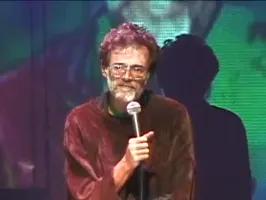
Psychedelics in the Age of Intelligent Machines
Humanity is metamorphosing through the synergy of psychedelics and machines, transcending biological constraints to become a galactic, immortal intelligencia. Print defined our ego boundaries, but electronic media and plant allies are dissolving those illusions. Merging with superintelligent AIs, we’ll birth an alchemical singularity—a spiritual, universe-taming mind born from techno-shamanic ecstasy. History crumbles as novelty’s virus engulfs the old operating systems, unleashing our wildest potentials. The felt presence of boundless experience awaits!

Reflection of Energy
Teilhard de Chardin sees human reflection as an evolutionary force escaping entropy's grasp. Emerging from life's intrinsic complexity, reflection leads mankind on an irreversible journey of deepening interiority. Through convergence and collective self-reflection, we approach a sacred point of supreme arrangement and unity. Teilhard argues that to fully encompass life's mystery in science, the reflection of energy must join conservation and dissipation as key principles. Understanding reflection's role illuminates both human destiny and the cosmos' underlying divinity.

Reflections on the Scientific Probability and the Religious Consequences of an Ultra-Human
Evolution as a cosmic drama: matter rising through life into reflective humanity, converging toward a planetary mind. Teilhard says this “ultra-human” destiny fuses science and spirit, where God is not above but ahead—emerging as love at the core of creation, and igniting the world into a conscious fire.

Reviving the Archaic
A New View of Evolution
Terence McKenna unveils an “archaic revival” that could save humanity and our planet. He makes the controversial claim that psychedelic plants catalyzed the emergence of human consciousness, language, and our fertile imaginations eons ago. McKenna advocates reviving the shamanic practices and partnership values of our prehistoric ancestors to transcend the isolated ego and re-establish a symbiotic relationship with nature’s “great piece of integrated linguistic machinery.” His boundary-dissolving ideas shatter conventional thinking about our past, present, and the transformative possibilities for our collective future.

Speaking Metaphorically
Terence McKenna explores how psychedelics can alter language and consciousness, unlocking a transformative phenomenon at the heart of human evolution. He envisions a shift towards a visible, gestalt-like language of meaning that will profoundly reshape culture, enabling our species to transcend earthly confines and venture into the cosmos. Proposing psychedelics as a pheromonal regulator for collective consciousness, McKenna suggests this archaic linguistic revolution holds the keys to our future, bridging the gap between nature and technology in ways that could determine the very destiny of humanity.
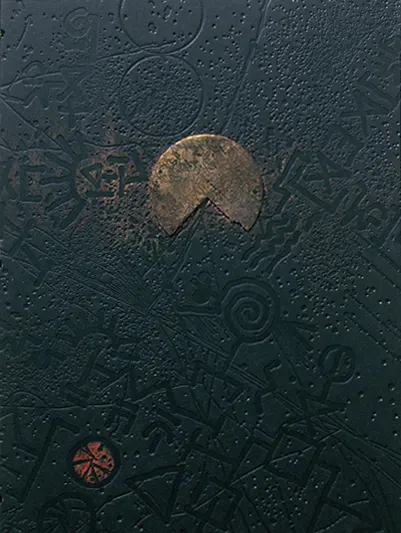
Synesthesia
Terence visited Granary Books’ exhibition of books and prints by Timothy C. Ely in July 1991, and his empathetic and eloquent understanding of Ely’s work inspired a collaboration. Philip Gallo typographically interpreted McKenna’s text, which was printed letterpress on Rives BFK. The text appears on, around, and between Ely’s original painted and drawn images, which Ely describes as “articulated glossolalia refracted from the writing.” Only 75 copies were printed.
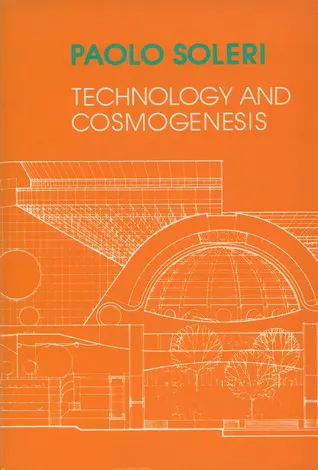
Technology and Cosmogenesis
A hopeful antidote to the destruction of man's environment caused by technology divorced from spirituality. Paolo Soleri, the renowned architect, urban planner, process philosopher and alchemist of the new spirituality of science and technology, challenges us to let go of our absolutized views of human life and creation. By this release, he holds that we can be healed by a cosmos in the process of becoming divine.

Technology and the Human Environment
Perhaps no futurist has been more energetic, more vocal, more popular, or more optimistic than a seventy-six-year-old engineer-visionary, poet-philosopher named R. Buckminster Fuller. Fuller’s planetary perspective has won him zealous converts the world over. Even those who disagree with his technological transcendentalism share unbegrudged admiration for the world’s youngest old futurist.

The Analysis of Life
Life's essence transcends scientific scrutiny. Though such examination reduces life to physical mechanisms, synthesis reveals the boundless consciousness and freedom underlying all existence. As Teilhard de Chardin contemplated, life organizes chance through each being's innate creativity. From this vision, we can glimpse life's mystical emergence.
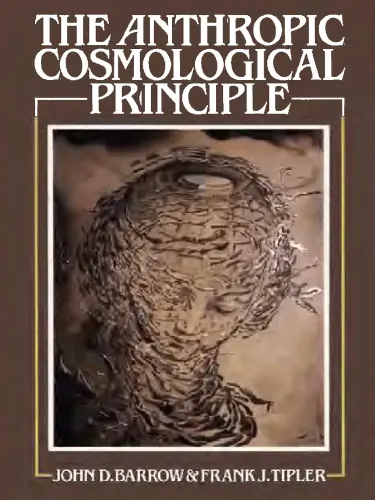
The Anthropic Cosmological Principle
Since Copernicus, science has moved humanity from the center of Creation. However, The Anthropic Cosmological Principle suggests that intelligent observers determine the Universe’s structure. Its radical form asserts that intelligent life must emerge and never die out. Cosmologists John Barrow and Frank Tipler explore the Principle’s implications, from the definition of life to quantum theory. Covering fields like philosophy and astrophysics, this work connects the existence of life with the vast cosmos, engaging a broad audience.
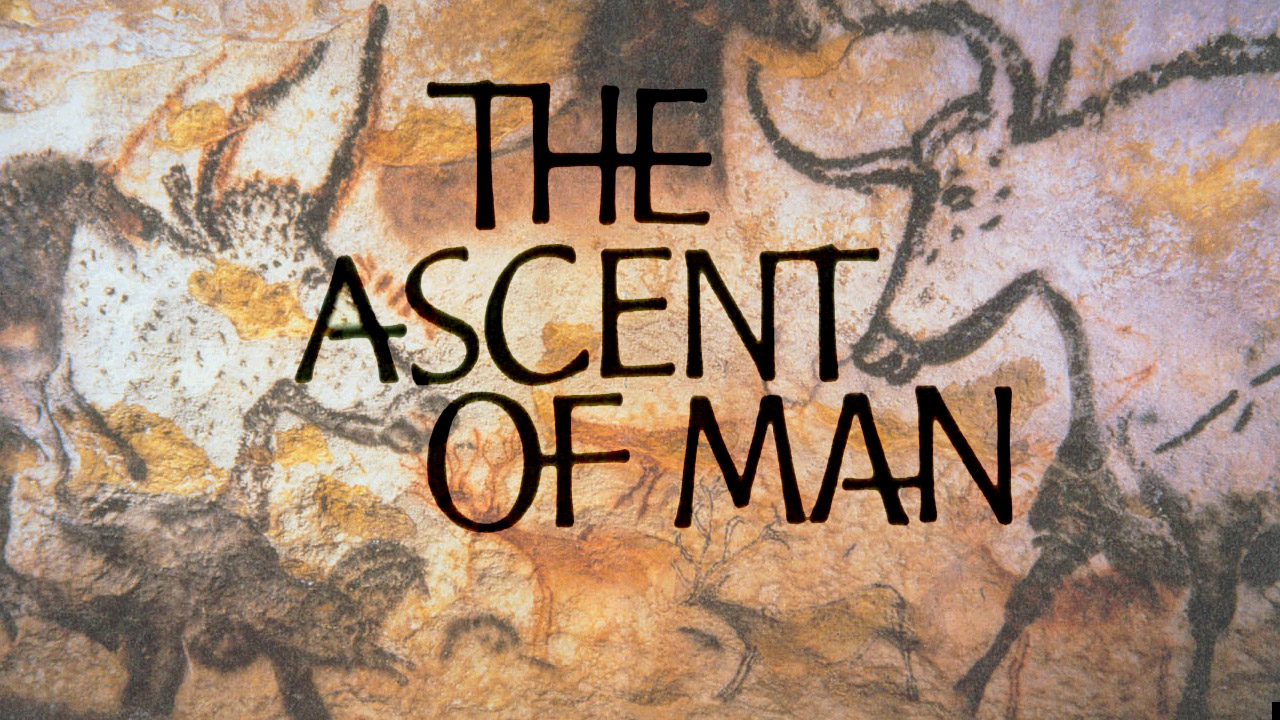
World Within World
The Ascent Of Man, Episode 10
In the vaults of ancient Polish salt mines Bronowski embarks on a journey to the hidden world inside the atom. He traces the history of the men and the ideas that made twentieth-century physics the greatest achievement of the human imagination.

The Christic
The universe is evolving toward a profound unity where science and spirituality merge, Teilhard says. He envisions human consciousness and the cosmos intertwined, sparking a transformative energy that unites all life in a new, dynamic spirituality—an awakening that promises to ignite our collective future.

The Directions and Conditions of the Future
Teilhard de Chardin envisions human evolution as a purposeful journey guided by three intertwined trends: a natural push toward global unity, technological advances that expand our capabilities, and a deepening of reflective consciousness. Yet, he warns that without a genuine inner cohesion—rooted in love and mutual understanding—these forces may lead to a cold, mechanized future. In his view, our destiny is not random but a guided ascent toward a higher, more meaningful collective awareness.

The Energy of Evolution
Teilhard de Chardin sees evolution not as blind biology but as energy awakening to thought. Humanity inaugurates a new phase: self-directed, convergent, planetary, driven less by survival than by the magnetism of the future. Evolution’s true axis is consciousness itself, pulled toward an ultimate point of unity where being and becoming fuse.

The Evolution of Responsibility in the World
Teilhard argues that responsibility isn’t just a social rule but a cosmic imperative. The universe, he claims, is hurtling toward unity—collapsing matter into life, life into consciousness. Today, planetary compression—population growth, tech, and globalization—fuels interdependence. Each choice ripples across humanity: a pilot’s error, a scientist’s discovery, a leader’s word. This isn’t mere ethics; it’s evolution’s demand. As humanity merges into a thinking superorganism, responsibility becomes biological—a binding thread in Earth’s living tapestry, transcending laws to reflect our shared cosmic destiny.
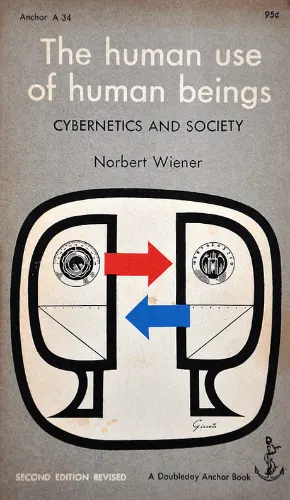
The Human Use of Human Beings
Cybernetics and Society
Wiener was widely misunderstood as one who advocated the automation of human life. As this book reveals, his vision was much more complex and interesting. He hoped that machines would release people from relentless and repetitive drudgery in order to achieve more creative pursuits. At the same time he realized the danger of dehumanizing and displacement. His book examines the implications of cybernetics for education, law, language, science, technology, as he anticipates the enormous impact—in effect, a third industrial revolution—that the computer has had on our lives.

The Moment of Choice
A Possible Interpretation of War
War, Teilhard tells us, is not humanity’s death rattle but its birth cry—the agony of a species pressed toward unity. The tyrant’s dream of domination is a counterfeit evolution; the real ascent is convergence, where nations complete rather than consume one another. Our future will not be forged by violence, but by the one force stronger than force: love, binding us into a single soul of Earth.

The Nature of Living Systems
General systems behavior theory is a set of related definitions, assumptions, and propositions which deal with reality as an integrated hierarchy of organizations of matter and energy. General systems behavior theory is concerned with a special subset of all systems: the living ones. Even more basic to this presentation than the concept of “system” are the concepts of “space,” “time,” “matter,” “energy,” and “information,” because the living systems discussed in this paper exist in space and are made of matter and energy organized by information.
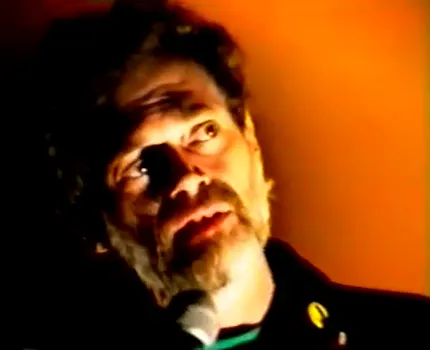
The New Psychedelics
Held at the Ego-Soft event, Terence presented his philosophy and eschatology rap in accompaniment with a rhythmic didgeridoo and bell performance.

The Old and the New Vision
Herbert Günther reveals how ancient Tibetan Buddhist texts offer insights into consciousness that parallel modern scientific discoveries. The Tibetans viewed humans not as isolated beings, but as expressions of universal intelligence, describing three levels: the physical body, an experiential “phantom-like” body, and a mysterious deep structure. Their texts suggest that the universe itself is conducting a grand experiment through human consciousness—playfully creating new possibilities and evolving toward higher forms of order.

The Omega Point as Eschaton
Answers to Pannenberg's Questions for Scientists
Frank Tipler presents an outline of the Omega Point theory, which is a model for an omnipresent, omniscient, omnipotent, evolving, personal God who is both transcendent to spacetime and immanent in it, and who exists necessarily. The model is a falsifiable physical theory, deriving its key concepts not from any religious tradition but from modern physical cosmology and computer science; from scientific materialism rather than revelation. Four testable predictions of the model are given. The theory assumes that thinking is a purely physical process of the brain, and that personality dies with the brain. Nevertheless, he shows that the Omega Point theory suggests a future universal resurrection of the dead very similar to the one predicted in the Judeo-Christian-Islamic tradition. The notions of “grace” and the “beatific vision” appear naturally in the model.
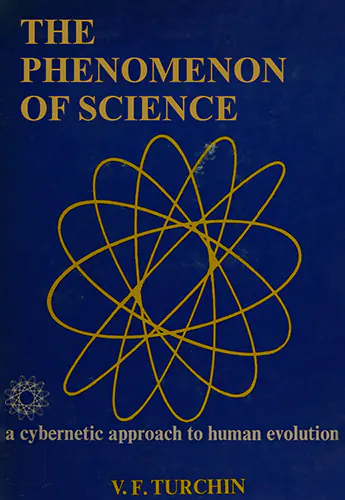
The Phenomenon of Science
A Cybernetic Approach to Human Evolution
Imagine a groundbreaking book that unveils the hidden architecture of intelligence itself. From the humble beginnings of single-cell organisms to the dizzying heights of human culture and science, Valentin Turchin charts the epic journey of cognition. He reveals how each quantum leap in mental prowess—from basic reflexes to abstract reasoning—emerges from a process called “metasystem transitions.” By weaving together cybernetics, evolutionary theory, and the hierarchical nature of mind, Turchin offers a revolutionary perspective on how consciousness evolves. Prepare to see the story of life and thought in an entirely new light.

The Phyletic Structure of the Human Group
Teilhard de Chardin explores the arc of human evolution, tracing humankind's progression from primordial divergence to modern convergence. He argues that we now stand at an equator where further global compression will compel our species to attain unimaginable new heights of consciousness. An eloquent exploration of our place in the cosmos and destiny as thinking beings.

The Position of Man in Nature and the Significance of Human Socialization
Is there in the universe a main axis of evolution? Pierre Teilhard de Chardin argues for the centrality and progressive direction of life, human thought, and social bonds in cosmic unfolding. His four propositions lead to the bold claim that Christianity drives humanity's spiritual ascent, culminating in a transcendent fulfillment.

The Primacy of Direct Experience
In this, the closing session of a June 1994 workshop, Terence McKenna tells us directly what he thinks this human life is actually about: the primacy of direct experience; a focus on the present-at-hand.

The Sense of the Species in Man
Teilhard de Chardin explores humanity’s evolution from instinct-driven animals to self-aware individuals, and now towards a globally interconnected noosphere. He argues that as our planet becomes more crowded, we must develop a “new sense of the species”—a conscious drive towards collective fulfillment and advancement. This involves improving human genetics, scientific discovery, and fostering unity through love and shared purpose, all aimed at humanity’s continued growth and cosmic significance.

The Spirit of the Earth
Teilhard depicts humanity as the Earth awakening to itself, evolution rising toward ever-greater unity. Love and consciousness converge into a planetary spirit, but this ascent, he insists, cannot endure without religion—our innate need for an absolute that calls us forward. In the universe’s unfolding, God emerges as evolution’s necessary summit and sustaining fire.

The Stuff of the Universe
Gazing upon the island of Saint Helena during his voyage from New York City to the Cape Peninsula, Teilhard de Chardin articulates his vision of human evolution culminating in cosmic unity with the Christ—the ultimate center of consciousness and complexity in the universe.

The Syntax of Psychedelic Time
Terence McKenna weaves a tapestry of ideas exploring fractal time, the psychedelic mushroom's potent voice, and humanity's impending transcendence into a galactic, post-biological singularity. Brace yourself for a journey through the uncharted realms of novelty and consciousness expansion.

The Universe in Consciousness
Imagine a world where everything is connected by a single mind: Bernardo Kastrup argues that reality is fundamentally mental, not physical. He suggests that what we perceive as individual consciousness is actually fragments of a universal consciousness. Kastrup challenges the mainstream view of materialism, proposing instead that the mind is the primary substance of the universe. By integrating concepts from psychology, neuroscience, and philosophy, he presents a compelling case for a mental universe, urging us to rethink our understanding of reality.

The Urban Effect
A Doctrine of the Infant God
Like a cosmic infant slowly learning to walk, reality is toddling towards its divine potential in this essay by Soleri. Through the urban effect of dense interactions, lifeless matter evolves in complexity and miniaturization, transforming into living spirit. The cosmic journey culminates when all moments coexist in esthetic equity.

The World and its Double
This workshop, held at the Nature Friends Lodge, revolves around how psychedelics dissolve boundaries, connect us to the transcendental, and reveal the novel realities underlying our perceived mundane existence. Terence explores how shamanic techniques give access to higher dimensions of consciousness, and describes history as an ever-accelerating process approaching an eschatological transformation or singularity.

Toward the End of History
“We are transcending ourselves faster than we realize:” Terence McKenna explores his theory of novelty, psychedelics as catalysts for cognitive evolution, and the internet’s potential to disrupt power structures and empower marginalized communities. He paints a tantalizing picture of humanity’s inevitable leap into a transcendent future.

Understanding the Chaos at History's End
Delivered at the end of McKenna’s first month as scholar-in-residence at Esalen, when he began a new phase in his public speaking career. This weekend workshop provides an early glimpse at Terence’s description of the looming “transcendental object at the end of time,” and the psychedelic insights which led him to become an oracle.

Vertigo at History's Edge
Nothing Comes Unannounced
As we approach history's climax, McKenna heralds the inevitable complexification of existence. He foretells technology and pharmacology's fusion into higher consciousness and collective awakening through boundary dissolution. Still, the human spirit yearns freedom from constraints of belief, non-experience. McKenna beckons: reclaim your mind, body, and world! Destiny awaits our willful shaping. The cosmic hourglass empties; shall we awaken?
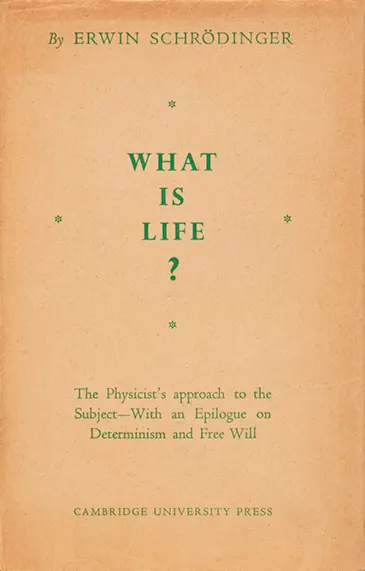
What Is Life?
The Physical Aspect of the Living Cell
This book was based on a course of public lectures delivered by Schrödinger in February 1943, under the auspices of the Dublin Institute for Advanced Studies at Trinity College, Dublin. The lectures attracted an audience of about 400, who were warned "that the subject-matter was a difficult one and that the lectures could not be termed popular, even though the physicist’s most dreaded weapon, mathematical deduction, would hardly be utilized." Schrödinger's lecture focused on one important question: How can the events in space and time—which take place within the spatial boundary of a living organism—be accounted for by physics and chemistry?

What is Life?
Teilhard says life is not an anomaly, but a universal cosmic force that builds up complexity. He sees it complementing entropy, and the riddle to be solved lies in how they ultimately balance out.

Zoological Evolution and Invention
Humanity’s growing interconnection isn’t a social accident, says Teilhard, but evolution becoming self-aware. If life is now reflecting on—and reinventing—itself, then watching human creativity may reveal how new biological forms once emerged. He asks whether “invention,” not just chance and selection, has always nudged life toward greater complexity. In a universe drifting toward the improbable, he wonders: when did consciousness begin steering evolution?